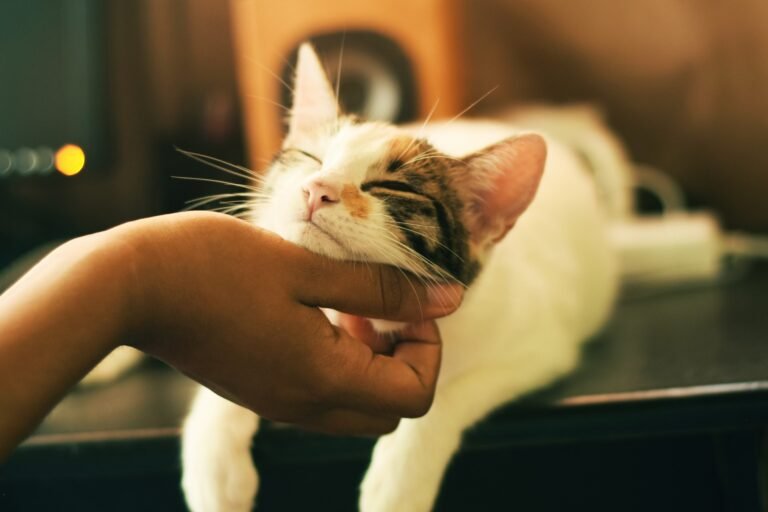Diseases of the cat in summer?

Diseases appear more in summer, at the end As with babies or the elderly, cats suffer from heat or sunny days. frequently in the summer or worsen, explaining an often increased mortality at the end of the summer.
What are the summer diseases of the cat and how to prevent them?
Heat-related Illnesses in Cats in Summer
Summer is most often characterized by an increase in temperatures, especially in the South. Without going as far as the heat wave, the heat has a detrimental effect on your cats. For a very simple reason… they don’t sweat!
A reminder of an essential process, homeothermy
Like humans, cats belong to the category of homeothermic animals: they have a set of mechanisms to guarantee their constant internal temperature, via thermo-regulation processes.
Did you know?
The cat has a normal body temperature of 38.5°C compared to 37.2°C in humans. This is why we always have this sweet feeling of warmth when we caress a feline.
To maintain a constant temperature in summer, the body must eliminate heat through two processes: transpiration and ventilation.
If humans have millions of sweat glands, cats only have them on… their pads.
This is why, like the dog, he can only eliminate calories by breathing faster: this is polypnea, the learned name for panting!
Did you know?
If you find small wet paw marks, it’s just your cat sweating from the pads.
The heat stroke
When an animal can no longer maintain its homeothermy, its body temperature increases: this is heatstroke.
It most often happens above 40°C of internal temperature, the signs are considered serious from 41°C with irreversible lesions, and death can occur at 42°C.
With a higher base temperature than in humans, the cat, therefore, reaches the critical zone more quickly: the signs are quite characteristic with hyperthermia (over 40°C), very congested skin (ears), rapid breathing, and neurological signs with seizures.
The animal must be cooled as quickly as possible and rehydrated by infusion.
Heatstroke can be fatal. It can occur both outdoors and indoors, especially in exposed and unventilated places like a car.
No need to be in direct sunlight: an animal can get heat stroke in a closed car parked in an underground car park.

Our tip: make your cat sweat!
In summer, always stroke your cat with a wet hand or a damp glove. Water deposited on his coat will evaporate, just as if he were sweating. This evacuated heat will be as much less to eliminate by breathing.
The consequences of heat on other illnesses
Heat and risk of dehydration weaken two major organs of the cat:
– the cardio-respiratory system: the faster a cat breathes to eliminate heat, the more its heart accelerates;
-the renal system: the more a cat becomes dehydrated, the less functioning the kidneys, the more renal insufficiency can develop.
This means that heat can aggravate or reveal underlying pathologies, kidney failure in cats being very common beyond 10 years. If in doubt, tests should be done. Generally speaking, most serious chronic illnesses can be accelerated by heat.
These diseases of cats in summer are all the more tricky as the main symptom of uremia is an increase in thirst… which is also naturally encountered when it is hot.
Our tip: get your cat to drink!
Do not hesitate to add water in its boxes or even on its croquettes. For playful cats, put a small ice cube in its water and make it move: this little game encourages some cats to drink!
In our catteries, cats can drink at their convenience and their water is changed regularly.
Cat diseases in summer linked to UV rays
Heat isn’t the only thing that can harm your cat. The sun and the dreaded ultraviolet rays are just as harmful.

Dermatitis and skin cancer
As in humans, UV rays have an inflammatory action: they can create dermatitis or aggravate existing skin lesions, especially if the hair is sparse.
Our tip
Cats with thin coats should be prevented from lying in direct sunlight.
The most serious solar erythema is solar dermatitis or actinic keratosis, affecting in particular light-haired cats. It mainly affects the face, on the nose or the edge of the ears. Due to UV, this dermatitis can even be caught on an indoor cat, behind a window. It results in significant inflammation of the area, often with associated pain.
It’s apre-cancerous lesion, which can progress to a very serious form: squamous cell carcinoma.
Our tip
If your white-haired cat has sparse and sparse areas, protect it. There is a special tomcat sunscreen, the Sun Free Dermoscent.
Ocular pathologies
UV rays can also cause irritation of the conjunctiva (conjunctivitis) or the cornea (keratitis): the eye is red, watery.
Any eye pain (closed eye) or purulent discharge should lead to the vet.
These eye problems can be accentuated in summer by pollution, fine particles or pollen.
Our tip
If your cat comes back from outside with irritated eyes, simply clean them with saline solution first.
NEVER use eye drops with cortisone without an eye check by a veterinarian. It is dangerous in case of corneal ulcer.
Parasitic diseases of sunny days
Summer is also the season for parasites, especially external parasites (ectoparasites). Fleas, mosquitoes, chiggers or ticks can quickly become a scourge in certain areas, and put your cat’s health at risk.
ticks in cats
There are a multitude of varieties: they are more common in peri-urban areas and in the countryside.
Although rarer than dogs, ticks have a double action on the medical level:
– a direct action, they can create a small dermatitis, often benign;
– an indirect action, by transmitting to the cat germs responsible for serious illnesses.
The most severe transmissible pathology is feline hemobartonellosis or hemotropic mycoplasmosis. In its acute form, it appears 2 to 20 days after the tick bite: it results in fever, hemolytic anemia (destruction of red blood cells) and jaundice.
It is a very serious, potentially fatal disease.

Chiggers in the cat
Also called pickers, these small orange mites are found mainly at the end of summer, hence their names.
They are responsible for mild dermatitis or intertrigo on the legs, which is not serious.
Fleas in cats
It is the parasite of the beautiful days, the fleas developing as soon as the temperatures are mild.
This insect is very common: it transmits cat diseases in summer (like certain tapeworms) and causes skin disorders, which are often very marked.
On an allergic animal, a single flea bite can cause very severe itching. In the most characteristic forms, DAPP or flea bite allergic dermatitis results in pruritus (scratching), licking, papules and hair loss, mainly on the dorso-lumbar triangle.
When the contamination is moderate, it is sometimes difficult to see the fleas: they only stay on the cat for 15 to 30 minutes a day, to feed by bite.
Our tip
To find out if your cat has fleas, lay him on a white sheet and rub his lower back against the grain. If small black dots fall on the white linen, it is flea droppings and not soil. You can confirm this by placing these small dots on a damp paper towel: the dot disintegrates with red-brown tints, proving that it is indeed digested blood.
Remember to treat your cat against fleas. If brought home, flea eggs can persist for more than a year in a home. And develop in the middle of winter with heating. You can quickly find yourself literally invaded, and get bitten.
myasis
On infected wounds, flies can lay eggs and give rise to the multiplication of maggots within a few days. Their development often reflects a significant deterioration in the general condition of the cat.
Infectious diseases during the summer
If winter is the period of viral diseases, we could simplify by saying that summer is rather those of bacterial diseases.
Indeed, many bacteria need heat to grow: this is why food or water “turn” faster in summer. Two conditions are seen frequently in the summer period, digestive conditions and respiratory disorders.
cat gastroenteritis
These are mostly benign forms, linked to the proliferation of bacteria with digestive tropism. A diet and an intestinal antiseptic usually allow healing.
Thermal shocks on the digestive tract (with, for example, ice water) promote these digestive disorders. It is therefore necessary to be particularly vigilant with food.
Our advice
Check if the food or water bowls are exposed to the sun. If so, you have to think about changing them in the summer.
Feline respiratory diseases
We now see more and more respiratory and ENT diseases in the middle of summer: rhinitis, laryngitis, tracheitis…
On the other hand, deep affections (pneumonia, pleurisy, etc.) are rarer.
They are most often benign, but care must be taken with kittens and older cats.
Anything that promotes hot and cold can contribute to these conditions: open windows, fans and of course air conditioning.
Our advice
In the car, never put your cat’s transport box in front of the passenger’s feet: he risks taking on the cold vents of the air conditioning.
Other summer pathologies
Apart from cat diseases in summer, other conditions are more common in summer. They are partly related to the fact that the cat spends more time outside, or that it is confronted with new dangers.
Let us mention in particular traumas (fall, accident by a car, bites by other cats, abscess with spikelets…), drownings or acute inflammatory or allergic reactions (wasp sting, angioedema, processionary caterpillars…)…
And for greedy cats by the sea, be careful if you have fishermen around you: a cat can quickly swallow a hook while trying to swallow a fish.






